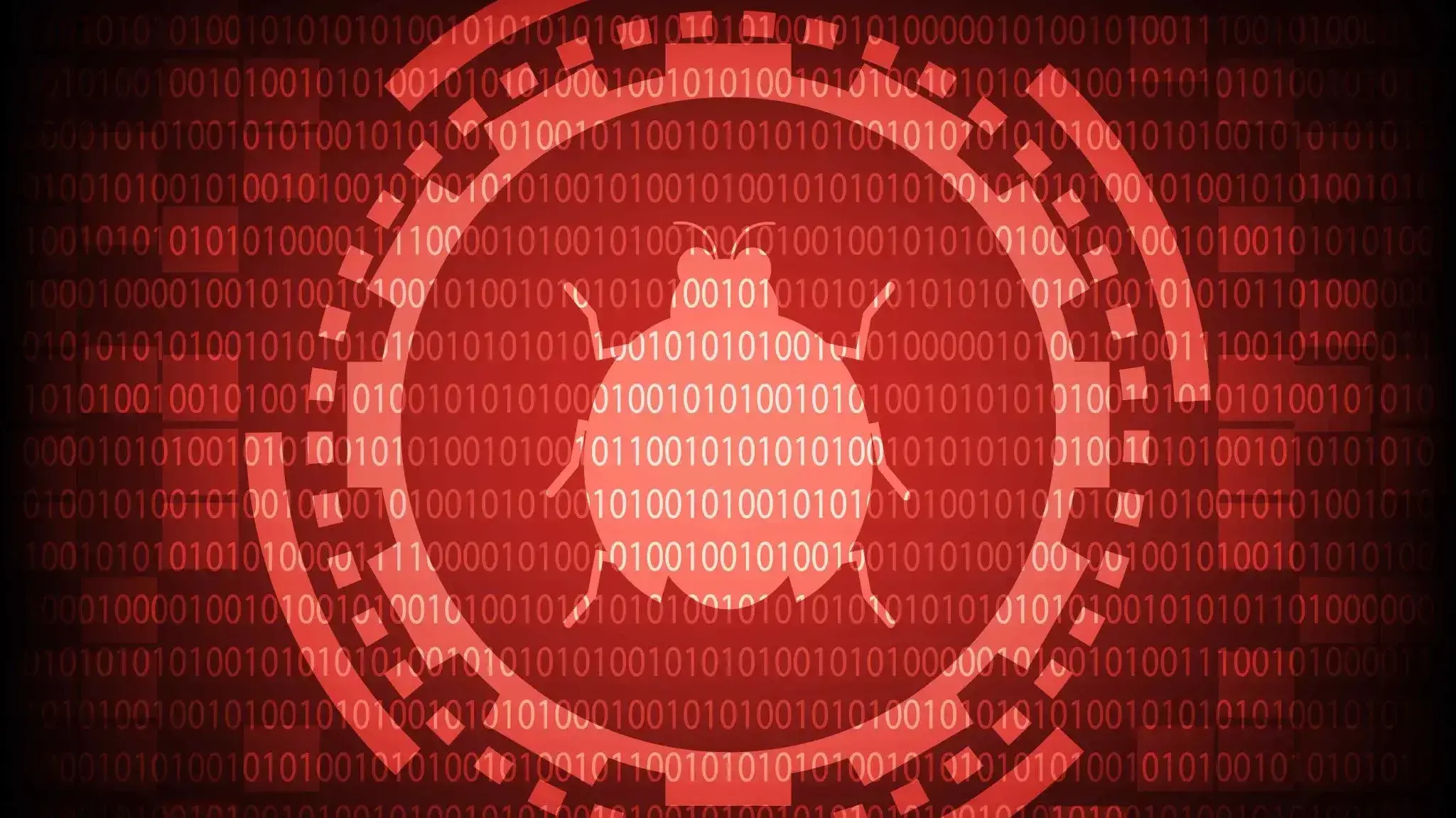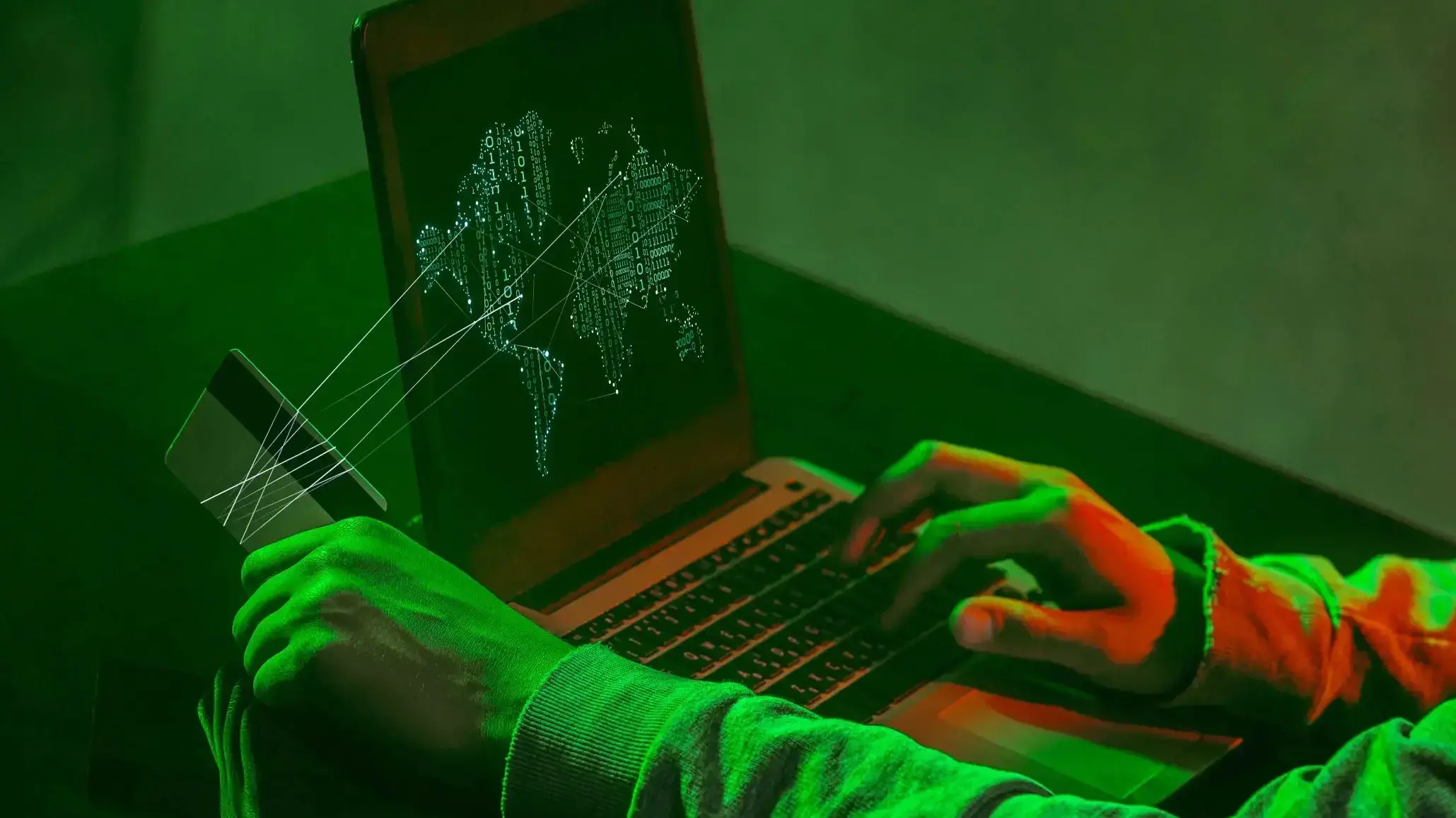Botnets have become one of the most powerful and persistent threats in modern cybercrime. These invisible networks of hijacked devices are capable of launching widespread attacks that can cripple businesses, steal sensitive information, and generate illicit profits.
Their use is growing rapidly, not just in volume but in sophistication, enabling attackers to automate operations and stay hidden for longer. As internet-connected devices and networks expand, especially with the rise of the Internet of Things (IoT), botnets are becoming harder to detect, control, or eliminate.
From shutting down websites with overwhelming traffic to silently mining cryptocurrency, botnets pose serious risks to individuals, organizations, and national infrastructure. In the sections that follow, we will explore how botnets operate, the types of crimes they enable, notable real-world examples, and effective ways to detect and prevent infections.
What is a Botnet?

A botnet (short for bot network) is a collection of internet-connected devices, such as computers, servers, or IoT gadgets, that have been infected with malware and are remotely controlled by a cybercriminal.
These compromised devices, often referred to as bots or zombies, operate without their owners’ knowledge and are used collectively to launch cyberattacks. The attacker, known as the botmaster, controls the botnet in two main ways.
One method is through centralized command-and-control (C&C) servers, where instructions are sent from a single point. The other is through peer-to-peer (P2P) networks, where bots communicate with one another in a decentralized fashion. This decentralized setup makes the network more difficult to detect and dismantle.
Botnets are highly versatile and have been used in financial fraud, phishing campaigns, DDoS attacks, and even assaults on critical infrastructure. Their global reach and ability to operate autonomously make them one of the most significant and growing threats in today’s cybersecurity landscape.
How Botnets Work
Botnets operate in a three-step process: Infection, Communication, and Execution. Each phase plays a crucial role in allowing cybercriminals to control infected devices and carry out large-scale cyberattacks.
Step 1: Infection
Cybercriminals use various techniques to infect devices and recruit them into a botnet.
Phishing Emails: Malicious attachments or links trick users into downloading malware.
Drive-by Downloads: Visiting an infected website automatically downloads malware without user interaction.
Malicious Links & Ads: Clicking on compromised advertisements or links spreads botnet malware.
Exploiting Software Vulnerabilities: Unpatched operating systems and applications allow attackers to gain unauthorized access.
Trojanized Software & Cracked Programs: Illegitimate or pirated content often contains hidden malware.
Internet of Things (IoT) Exploitation: Weak passwords and insecure smart devices (CCTV cameras, routers, printers) are easy targets for botnets.
Step 2: Communication
Once a device is infected, it becomes part of the botnet and establishes communication with the botmaster, who controls it remotely. Communication methods include:
Centralized Command-and-Control (C&C) Servers: Bots connect to a single server where the attacker sends instructions. This method is easy to manage but also easier to shut down.
Peer-to-peer (P2P) Networks: Bots communicate with each other instead of relying on a single server, making the botnet harder to dismantle.
Domain Generation Algorithms (DGA): Bots dynamically generate domain names to communicate with C&C servers, avoiding detection.
Step 3: Execution
In the final phase, the botnet is used to carry out cyberattacks. These can range from disrupting services to stealing sensitive data. Thanks to automation, botnets can launch large-scale attacks with minimal input from the attacker.
Types of Cybercrimes Using Botnets
Botnets are responsible for a variety of cybercrimes, ranging from financial fraud to large-scale digital disruptions. Below are five of the most common criminal activities they facilitate:
1. Distributed Denial-of-Service (DDoS) Attacks
A DDoS attack occurs when a botnet floods a targeted website, server, or network with an overwhelming volume of traffic, rendering it inaccessible to legitimate users. Cybercriminals use this tactic to disrupt business operations, blackmail organizations into paying for protection, or take down competitors in unethical schemes.
A notable example is the Mirai botnet, which hijacked IoT devices to launch one of the largest DDoS attacks in history, temporarily crippling major internet services like Twitter and Netflix.
2. Spam and Phishing Campaigns
Botnets are often used to send massive volumes of spam and phishing emails. These messages may contain fake login pages designed to steal credentials, malicious attachments that install malware, or fraudulent content impersonating banks, government agencies, or tech companies.
Victims who engage with these emails unknowingly expose their personal and financial data, which can be used for identity theft, financial fraud, or further infections.
3. Credential Theft and Banking Trojans
Many botnets are designed specifically to steal login credentials for online banking, corporate systems, email accounts, and social platforms. They use methods like keylogging (recording every keystroke), form grabbing (capturing data entered into login forms before it is encrypted), and man-in-the-browser attacks (intercepting web data).
The Zeus botnet is a prime example, having stolen millions of dollars through such techniques by silently extracting banking credentials from infected systems.
4. Cryptojacking
Botnets can hijack infected computers to mine cryptocurrencies without the user’s consent, a practice known as cryptojacking. This activity slows system performance, spikes electricity consumption, and causes long-term damage to hardware.
The Smominru botnet is a well-known case, having infected thousands of devices to mine Monero, quietly generating millions of dollars for its operators.
5. Click Fraud
Some botnets are used to commit click fraud by generating fake clicks on digital advertisements. This manipulates pay-per-click (PPC) metrics to either divert advertising revenue, drain competitors’ ad budgets, or inflate traffic to malicious websites.
Click fraud undermines the integrity of online marketing platforms and costs advertisers billions of dollars annually.
Botnets now enable large-scale attacks with minimal effort. As these threats grow more sophisticated, organizations and individuals must adopt adaptive cybersecurity strategies to detect, contain, and neutralize botnet activity.
How to Detect and Prevent Botnet Infections
Botnets operate silently, often without users realizing their devices have been compromised. Detecting and preventing these infections is essential for protecting personal data, business networks, and critical infrastructure.
How to Detect a Botnet Infection
Watch for Unusual System Behavior: A sudden drop in system performance, frequent crashes, or unexplained overheating could indicate high CPU or network usage caused by a botnet. You may also notice pop-ups or unfamiliar programs running without your input.
Monitor Internet Activity: Pay attention to unexpected spikes in bandwidth usage, even when your device is idle. Excessive data consumption without obvious cause, like streaming or downloads, could signal background communication with a botnet.
Check for Suspicious Network Traffic: Look for connections to unfamiliar or foreign IP addresses. Frequent attempts to reach known Command-and-Control (C&C) servers are strong indicators of botnet involvement.
Investigate Unauthorized Access Attempts: Unrecognized login attempts or strange activity on your accounts may suggest your system is being used for spam or brute-force attacks. Check your email outbox for messages you did not send.
Watch for Disabled Security Software: If your antivirus or firewall is suddenly turned off or refuses to update, a botnet may have disabled your protection. Inability to install security patches is another red flag.
How to Prevent Botnet Infections
Keep Software and Systems Updated: Regularly update your operating system, browsers, and apps to close security loopholes. Apply patches promptly to guard against vulnerabilities exploited by botnets.
Use Reliable Cybersecurity Tools: Install and maintain reputable antivirus and anti-malware programs. Firewalls and intrusion detection systems can help you monitor and block suspicious traffic.
Be Cautious with Emails and Downloads: Avoid opening email attachments or links from unknown senders. Only download software from official and trusted sources to reduce the risk of malware infections.
Secure IoT and Network Devices: Change default passwords on routers and smart home devices. Disable unnecessary remote access settings and use network segmentation to isolate devices and contain potential infections.
Monitor and Analyze Network Activity: Use tools that track outbound connections and flag unusual traffic. Regularly reviewing logs can help you detect early signs of compromise.
Implement Multi-Factor Authentication (MFA): Enable MFA on all important accounts to prevent unauthorized logins. This added layer of security helps reduce the risk of credential theft and botnet propagation.
Educate Employees and Users: Train your team to spot phishing emails, fake downloads, and other social engineering tactics. Ongoing cybersecurity awareness helps prevent human errors that can open the door to botnets.
Detecting and preventing botnet infections requires a proactive and layered security strategy. By keeping systems up to date, monitoring network behavior, and using trusted security tools, both individuals and organizations can significantly reduce their exposure to botnets.
Famous Botnets in History

Botnets have played a major role in some of the most devastating cyberattacks in history. Below are three of the most well-known botnets, detailing how they worked and the widespread impact they caused.
1. Conficker (2008 – Present)
Conficker is a self-replicating worm that targeted Windows-based systems by exploiting known software vulnerabilities. Once inside a network, it disabled security services, blocked updates, and spread aggressively.
At its peak, Conficker infected millions of machines globally, including those in government agencies and Fortune 500 companies. Despite the availability of patches, many systems remain vulnerable today, underscoring the importance of routine system updates.
2. Cutwail (2007 – Present)
Cutwail is one of the largest known spam botnets, often used in conjunction with malware like Zeus. It infected systems to send out enormous volumes of spam emails containing phishing links and malware payloads.
Cutwail has been responsible for distributing millions of spam emails daily and remains active by adapting to new detection methods. Its long-standing presence highlights the persistent threat of spam-based cybercrime.
3. Srizbi (2007 – 2008)
Srizbi was known for its high-speed spam distribution capabilities. Using rootkit technology to hide itself, it infected devices via drive-by downloads and was capable of sending up to 60 billion spam emails per day.
These emails promoted fake pharmaceuticals, financial scams, and malware downloads. Although its command-and-control servers were eventually taken down, remnants of Srizbi have persisted, reflecting how botnets can continue to linger even after disruption.
The Future of Botnets and Cybersecurity Measures

Botnets are evolving with AI, automation, and decentralized control, making them harder to detect and more effective. Cybersecurity professionals are stepping up with smarter defenses to counter these threats.
Self-Learning Botnets: AI-powered botnets can adapt in real time to changing defenses. They modify attack patterns to avoid detection and use machine learning to scan for vulnerabilities. This makes them faster, more stealthy, and harder to stop than traditional botnets.
Autonomous Attacks: Future botnets will increasingly rely on automation. They can spread malware, steal login credentials, and launch DDoS attacks without direct human input. Many use smart malware that detects and disables antivirus software first, making them harder to stop once active.
Decentralized Command-and-Control (C&C) Networks: Instead of centralized servers, modern botnets use peer-to-peer or blockchain-based systems. These models make command distribution anonymous, resilient, and harder to shut down.
Legal Measures and Ethical Responsibility in Combating Botnets
Fighting botnets requires global cooperation, strong laws, private-sector action, and ethical commitment.
1. Global Law Enforcement Takedowns
International cooperation has proven essential in disrupting large-scale botnet operations. Agencies such as Europol, INTERPOL, the FBI, and Eurojust have led high-impact cybercrime takedowns.
For example, Operation LadyBird in 2021 dismantled Emotet, one of the most dangerous malware distribution networks. Similarly, Operation Avalanche brought together law enforcement from over 30 countries to shut down a vast botnet infrastructure responsible for phishing, ransomware, and banking malware.
2. Cybercrime Legislation and Legal Frameworks
Governments around the world are strengthening laws to hold cybercriminals accountable. In the United States, the Computer Fraud and Abuse Act (CFAA) criminalizes unauthorized access to computer systems, including botnet creation and control.
In Europe, the General Data Protection Regulation (GDPR) enforces strict data protection standards and holds organizations liable for breaches resulting from botnet-related negligence. Some countries are also implementing IoT security laws, requiring manufacturers to improve device security to reduce vulnerabilities commonly exploited by botnets.
3. Public-Private Collaboration
Tech companies play a critical role in botnet mitigation efforts. Corporations like Microsoft, Google, and Cloudflare contribute by disrupting botnet infrastructure, such as command-and-control servers.
At the same time, cybersecurity firms provide threat intelligence, malware analysis, and digital forensics to support ongoing investigations. This public-private synergy enhances detection speed, boosts incident response, and improves the chances of coordinated takedowns.
4. Accountability for Botmasters and Organizations
Legal efforts target not only botmasters but also organizations that neglect cybersecurity best practices. Botnet operators can face significant criminal penalties, including prison time and asset forfeiture.
Meanwhile, businesses that fail to secure their systems may be subject to fines, lawsuits, and reputational damage, particularly if they ignore basic measures like software patching, network monitoring, and employee training.
5. Ethical Considerations in Cybersecurity
Beyond legal enforcement, ethical responsibility is key in shaping a proactive cybersecurity culture. Professionals are expected to engage in ethical hacking, responsible vulnerability disclosure, and ongoing education to stay ahead of threats.
There is also a growing push for collaboration between governments, academia, and the private sector to develop secure, privacy-respecting digital ecosystems. Upholding ethical standards helps build trust and ensures that security measures align with user rights and societal values.
Emerging Cybersecurity Solutions to Combat Botnet Threats
As botnets grow more intelligent, automated, and decentralized, cybersecurity professionals are responding with innovative solutions to detect, contain, and prevent these threats.
AI-Powered Threat Detection: AI and machine learning help detect botnet activity by analyzing unusual behavior. These tools spot threats in real time. Automated systems then isolate infected devices before the malware spreads.
Zero Trust Security Models: Zero Trust assumes no user or device is trusted by default, enforcing strict verification, continuous monitoring, and segmented access. With features like multi-factor authentication and strong endpoint security, it significantly limits a botnet’s ability to infiltrate or spread across a system.
Improved IoT Security Standards: To counter botnet threats, manufacturers are enhancing IoT security with auto-updates, unique default passwords, and better device setup. Organizations also use network segmentation to block lateral movement across infected devices.
Blockchain for Secure Communication: Blockchain is being tested as a decentralized way to block botnet communication. Encrypted channels and blockchain-based DNS can disrupt access to C&C servers.
As botnets continue to evolve, so too must the tools and frameworks used to fight them. AI-driven defense, cross-sector collaboration, and the adoption of advanced security protocols will be essential in mitigating future botnet threats.
The Role of Cybersecurity Professionals in Combating Botnets
While technology plays a key role, skilled cybersecurity professionals are the real defense working across sectors to detect, disrupt, and dismantle botnets.
1. Threat Intelligence and Detection
Cybersecurity analysts use advanced threat intelligence platforms to monitor suspicious network activity, analyze malware behavior, and uncover command-and-control (C&C) structures.
By identifying patterns in global data, they help locate botnet infrastructure and anticipate attacks before they escalate.
2. Ethical Hacking and Penetration Testing
Ethical hackers simulate real-world cyberattacks to uncover vulnerabilities that botnets could exploit. Through penetration testing, red teaming, and bug bounty programs, these experts help organizations proactively patch weaknesses and strengthen their defenses.
3. Incident Response and Collaboration with Law Enforcement
When a botnet is discovered, incident response teams act swiftly, isolating infected systems, neutralizing malware, and coordinating with law enforcement where necessary. Their technical support is often crucial in large-scale takedowns, contributing behind the scenes to global operations like those that brought down Emotet and Avalanche.
As botnets grow more advanced, the demand for experts in malware analysis, forensics, and threat intelligence is rising. Ethical hackers and security engineers are vital to protecting data and infrastructure, proving that human skill, not just technology, is key to staying ahead of evolving threats.
Conclusion
Botnets remain one of the most dangerous and persistent tools in cybercrime, empowering attackers to launch large-scale operations such as DDoS disruptions, credential theft, phishing scams, and cryptojacking. Their ability to silently compromise countless devices makes them a significant threat to businesses, governments, and individuals alike.
As botnets continue to evolve, leveraging artificial intelligence, automation, and decentralized control systems, the need for adaptable and resilient cybersecurity becomes more urgent. Following the layered security strategies outlined throughout this article is key to reducing risk. These include maintaining updated systems, using intelligent threat detection, and strengthening device and network security.
Ultimately, staying ahead of botnet threats requires more than just tools it demands awareness, vigilance, and collaboration across public, private, and individual fronts. With proactive defense and a unified approach, we can safeguard our digital environments from the growing reach of botnet-driven cybercrime.
Frequently Asked Questions
How do cyber criminals use weak user passwords to infect user devices with botnet malware?
Cyber criminals often exploit weak user passwords through dictionary attacks or brute force attacks to gain unauthorized access. Once inside, they install malicious software that turns user devices into compromised machines controlled remotely by a bot herder, adding them to an entire botnet.
What are the main types of botnet attacks beyond DDoS and phishing attacks?
In addition to distributed denial of service (DDoS) and phishing attacks, botnet attacks include data theft, potential data leaks, spreading malicious code, and using zombie computers to breach web accounts. HTTP botnets can also infect other devices silently while evading detection.
How do botnets created with a centralized server differ from multi-server or hierarchical network topology models?
Botnets using a centralized server are easier to manage but are vulnerable to takedown. In contrast, a multi-server network topology or hierarchical network topology model spreads control across multiple points, making it harder to disrupt the entire botnet and increasing resilience against law enforcement.
Can botnet traffic be detected by monitoring network traffic on a computer network?
Yes, unusual botnet traffic patterns, such as high network traffic from compromised devices, can signal infections. Monitoring network traffic on a computer network aids in identifying infected computers or mobile devices, particularly if they are involved in a distributed denial of service attack or leaking sensitive information.

Yetunde Salami is a seasoned technical writer with expertise in the hosting industry. With 8 years of experience in the field, she has a deep understanding of complex technical concepts and the ability to communicate them clearly and concisely to a wide range of audiences. At Verpex Hosting, she is responsible for writing blog posts, knowledgebase articles, and other resources that help customers understand and use the company's products and services. When she is not writing, Yetunde is an avid reader of romance novels and enjoys fine dining.
View all posts by Yetunde Salami





















